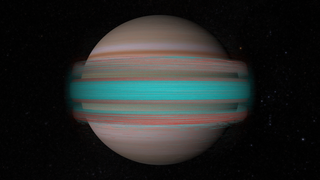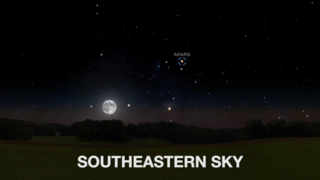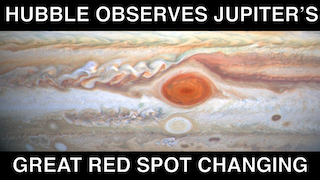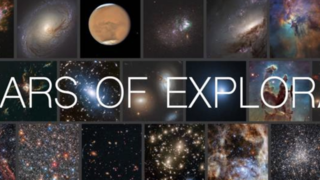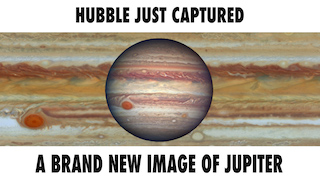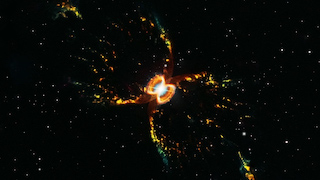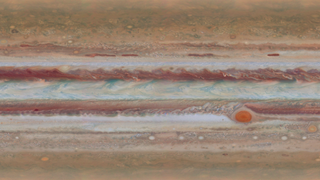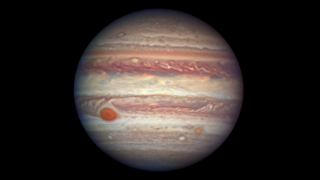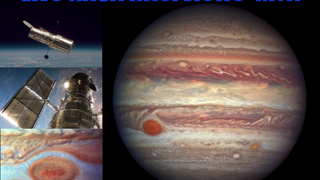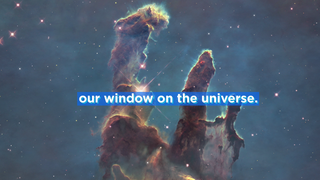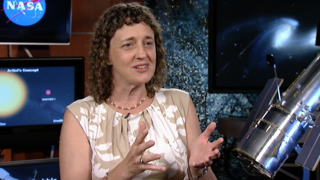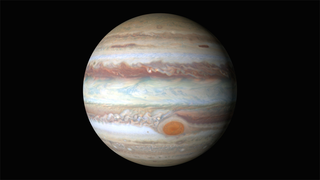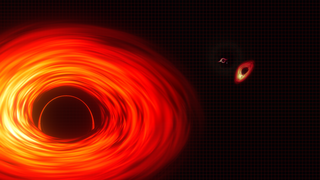Planets and Moons
ID: 12021
These new maps and spinning globes of Jupiter were made from observations performed with NASA’s Hubble Space Telescope. They are the first products to come from a program to study the solar system’s outer planets – Jupiter, Uranus, Neptune and, later, Saturn – each year using Hubble. The observations are designed to capture a broad range of features, including winds, clouds, storms and atmospheric chemistry. These annual studies will help current and future scientists see how these giant worlds change over time.
Scientists at NASA’s Goddard Space Flight Center, the Jet Propulsion Laboratory, and the University of California at Berkeley produced two global maps of Jupiter from the observations, which were made using Hubble’s high-performance Wide Field Camera 3.
The two maps represent nearly back-to-back rotations of the planet, making it possible to determine the speeds of Jupiter’s winds. Already, the images have revealed a rare wave just north of the planet’s equator and a unique filament-like feature in the core of the Great Red Spot that had not been seen previously.
In addition, the new images confirm that the Great Red Spot continues to shrink and become more circular, as it has been doing for years. The long axis of this characteristic storm is about 150 miles (240 kilometers) shorter now than it was in 2014. Recently, the storm had been shrinking at a faster-than-usual rate, but the latest change is consistent with the long-term trend.

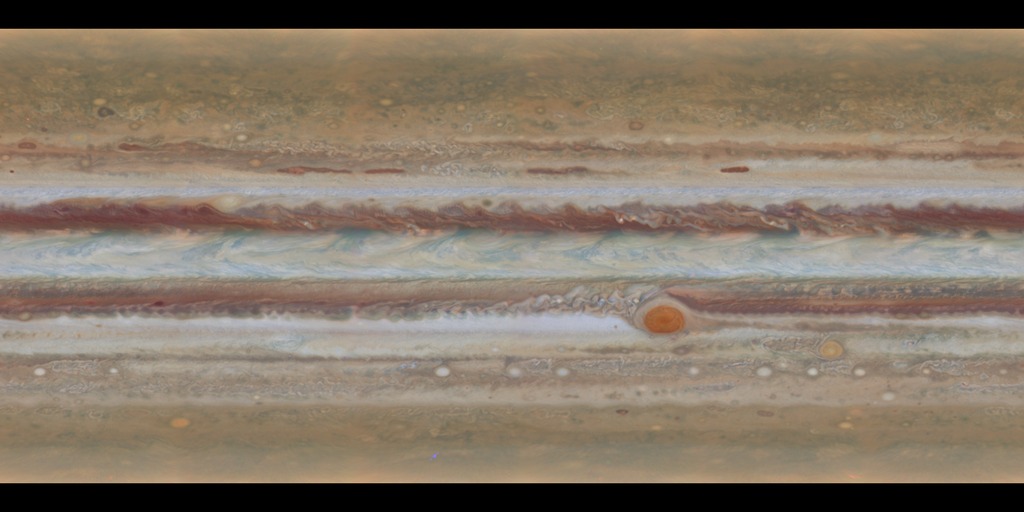


Hubble Maps Jupiter in 4k Ultra HD
Scientists at NASA’s Goddard Space Flight Center, the Jet Propulsion Laboratory, and the University of California at Berkeley produced two global maps of Jupiter from the observations, which were made using Hubble’s high-performance Wide Field Camera 3.
The two maps represent nearly back-to-back rotations of the planet, making it possible to determine the speeds of Jupiter’s winds. Already, the images have revealed a rare wave just north of the planet’s equator and a unique filament-like feature in the core of the Great Red Spot that had not been seen previously.
In addition, the new images confirm that the Great Red Spot continues to shrink and become more circular, as it has been doing for years. The long axis of this characteristic storm is about 150 miles (240 kilometers) shorter now than it was in 2014. Recently, the storm had been shrinking at a faster-than-usual rate, but the latest change is consistent with the long-term trend.




Used Elsewhere In
Source Material
Related
For More Information
Credits
Elizabeth Zubritsky (ADNET): Science Writer
Amy A. Simon (NASA/GSFC): Scientist
Michael H. Wong (University of California at Berkeley): Scientist
Glenn Orton (NASA/JPL CalTech): Scientist
Greg Bacon (STScI/Aura): Animator
Dan Gallagher (USRA): Editor
Michael Randazzo (Advocates in Manpower Management, Inc.): Technical Support
Aaron E. Lepsch (ADNET Systems, Inc.): Technical Support
Amy A. Simon (NASA/GSFC): Scientist
Michael H. Wong (University of California at Berkeley): Scientist
Glenn Orton (NASA/JPL CalTech): Scientist
Greg Bacon (STScI/Aura): Animator
Dan Gallagher (USRA): Editor
Michael Randazzo (Advocates in Manpower Management, Inc.): Technical Support
Aaron E. Lepsch (ADNET Systems, Inc.): Technical Support
Please give credit for this item to:
NASA's Goddard Space Flight Center
Space Telescope Science Institute
NASA's Goddard Space Flight Center
Space Telescope Science Institute
Short URL to share this page:
https://svs.gsfc.nasa.gov/12021
Mission:
Hubble
Goddard TV Tape:
G2015-085 -- Jupiter in 4k Ultra HD
Keywords:
SVS >> Clouds
SVS >> Globe
SVS >> HDTV
SVS >> Jupiter
SVS >> Rotating
SVS >> Hyperwall
SVS >> Hubble Space Telescope
SVS >> Planets
SVS >> Planetary Science
SVS >> Planetary Rotation
NASA Science >> Planets and Moons
SVS >> Presentation
GCMD >> Earth Science >> Atmosphere >> Atmospheric Pressure >> Planetary/rossby Waves
SVS >> Map
GCMD keywords can be found on the Internet with the following citation: Olsen, L.M., G. Major, K. Shein, J. Scialdone, S. Ritz, T. Stevens, M. Morahan, A. Aleman, R. Vogel, S. Leicester, H. Weir, M. Meaux, S. Grebas, C.Solomon, M. Holland, T. Northcutt, R. A. Restrepo, R. Bilodeau, 2013. NASA/Global Change Master Directory (GCMD) Earth Science Keywords. Version 8.0.0.0.0
https://svs.gsfc.nasa.gov/12021
Mission:
Hubble
Goddard TV Tape:
G2015-085 -- Jupiter in 4k Ultra HD
Keywords:
SVS >> Clouds
SVS >> Globe
SVS >> HDTV
SVS >> Jupiter
SVS >> Rotating
SVS >> Hyperwall
SVS >> Hubble Space Telescope
SVS >> Planets
SVS >> Planetary Science
SVS >> Planetary Rotation
NASA Science >> Planets and Moons
SVS >> Presentation
GCMD >> Earth Science >> Atmosphere >> Atmospheric Pressure >> Planetary/rossby Waves
SVS >> Map
GCMD keywords can be found on the Internet with the following citation: Olsen, L.M., G. Major, K. Shein, J. Scialdone, S. Ritz, T. Stevens, M. Morahan, A. Aleman, R. Vogel, S. Leicester, H. Weir, M. Meaux, S. Grebas, C.Solomon, M. Holland, T. Northcutt, R. A. Restrepo, R. Bilodeau, 2013. NASA/Global Change Master Directory (GCMD) Earth Science Keywords. Version 8.0.0.0.0
